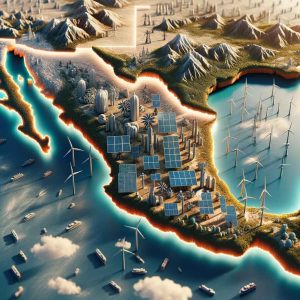In the ever-evolving landscape of renewable energy, one concept has been steadily gaining momentum – Offsite Power Purchase Agreements (PPAs). Over the last decade, these unique contractual agreements have emerged as a game-changer in the field of sustainable energy and have significantly driven its growth. This article delves into this intriguing world of offsite PPAs, shedding light on its evolution and exponential growth.
Picture this: A world where environmental sustainability doesn’t compromise economic viability; where businesses can meet their power needs while contributing to a greener future. Sounds fascinating, right? That’s exactly what offsite PPAs promise! With an exciting blend of economics and ecology, they are redefining how corporations approach energy consumption and procurement. Stay hooked as we embark on this enlightening journey through the transformative trajectory of offsite PPAs.
Understanding Offsite Power Purchase Agreements (PPAs)
In the ever-evolving landscape of renewable energy, a silent revolution is taking place – the rise and emergence of Offsite Power Purchase Agreements (PPAs). Against a backdrop where sustainability has transformed from an idealistic mantra to a critical business imperative, these innovative agreements are paving the way forward. This article delves into how offsite PPAs, particularly solar and wind PPAs, have grown in importance as key tools for businesses seeking to mitigate their environmental impact while securing reliable power supply.
The once embryonic concept of sourcing power via long-term contracts with independent renewable energy providers is now maturing into a robust market trend. From tech giants to small enterprises, companies today are increasingly turning towards solar and wind PPAs not just for green credits but also for significant cost savings they offer. So buckle up as we take you on this enlightening journey through the evolution and growth trajectory of Offsite Power Purchase Agreements!
Defining Offsite PPAs: Basic Overview and Structure
Delving into the intriguing realm of clean energy, offsite PPAs (Power Purchase Agreements) are emerging as a game-changer. Essentially, an offsite solar PPA is a contractual agreement in which an entity (usually a business or corporation) agrees to purchase electricity directly from a renewable project located elsewhere – often far from the physical premise of the company. This scheme offers unprecedented flexibility permitting businesses to tap into alternative energy sources irrespective of their geographic location.
Within the structure of an offsite solar PPA, two key players take center stage—the buyer (offtaker), who commits to buying produced energy, and the developer/owner who ensures this energy generation via renewable resources like solar power plants. The crux lies in the negotiated contract that includes price rates, delivery schedules and risk allocation—brushing aside typical obstacles faced with onsite renewable installations. In essence, offsite PPAs provide a creative solution for companies committed towards sustainable practices but constrained by location or space issues—a charming blend of green energy without geographical barriers!

Historical Evolution: Tracing the Growth of Offsite PPAs
Taking a leap back in time, the concept of Power Purchase Agreements (PPAs) was introduced to strengthen and stabilize grid reliability. Since their inception, PPAs have come a long way – what once solely referred to agreements between utilities and power-generation companies now includes new players: businesses and independent energy producers.
A major innovation that has redefined this landscape is Offsite Power Purchase Agreements. These types of agreements cater perfectly to our rapidly evolving world where sustainability reigns supreme. It empowers corporations to purchase renewable energy from offsite power plants thereby allowing them freedom from the entanglements of setting up on-site generation facilities while simultaneously meeting climate goals. The rise in offsite PPAs signals not only an evolution but also a revolution toward sustainable business standards across industries worldwide.
Companies that Trust us:
Key Drivers Behind The Popularity of Offsite PPAs
One of the pivotal drivers behind the growing popularity of Offsite Power Purchase Agreements (PPAs) is their capacity to provide significant green energy solutions at a competitive price. In this era where businesses are looking to reduce their carbon footprints, Offsite PPAs allow companies to meet their sustainability goals without having to make heavy direct investments in renewable power generation infrastructure.
Moreover, with the surge in publicly announced commitments to 100% renewable energy, Offsite PPAs have become an indispensable tool for organizations pursuing such targets. Not only do they offer price stability by hedging against future utility price increases, but they also enable businesses located areas with limited or more expensive green power options to access affordable clean energy regardless of geography.
In addition, Offsite PPAs enable organizations to mitigate energy-related market risks that potentially impact their financial performance. They do so by shielding against volatility in power prices and mitigating the risk of potential policy changes negatively affecting their operations. In other words, businesses can maintain operational efficiency without compromising on their environmental commitments.
Moreover, it is important to underscore the positive societal impact facilitated by Offsite PPAs. By powering operations with renewable sources, companies boost the development of green infrastructure and encourage job creation in the alternative energy sector. Thus, they contribute to local economies while promoting cleaner living conditions for communities at large.
Furthermore, Offsite PPAs offer significant flexibility for corporations looking to tailor an approach that aligns with their specific needs or industry regulatory environment. Be it biogas-based electricity generation for biofuel production facilities or wind-powered mills for textile manufacturing – every business has unique requirements that can be fulfilled through tailored Offsite PPA contracts designed based on load size and geographic location’s unique needs.
Case Studies: Successful Implementation of Offsite PPAs
Diving into the success stories of offsite Power Purchase Agreements (PPAs), we find innovative and strategic moves by thriving companies that have redefined clean energy procurement. A shining example is Google, a leading proponent of this model, which as early as 2010 began utilizing an offsite PPA strategy to offset their carbon footprint while ensuring power availability for its facilities. Their strategic partnership with NextEra Energy saw the purchase of 114 megawatts of wind energy from Iowa – This endeavor not only helped Google stabilize its long-term costs for powering data centers but also encouraged sustainable practices in the tech industry.
Microsoft too was not left behind; in making strides towards carbon neutrality. The software giant leveraged an offsite PPA deal with EDP Renewables North America by buying 96% of the power produced at the Pilot Hill Wind Project in Illinois. What’s intriguing about Microsoft’s approach is that they strategically used this green power to fuel their datacenters – all while reducing greenhouse gas emissions and secured reliable power supply amidst rising fossil fuel prices. These avant-garde business maneuvers tangibly showcase how Offsite PPAs can be wielded profitably whilst advancing sustainability goals.
Challenges and Solutions in Implementing Offsite PPAs
Despite their growing popularity, implementing offsite PPAs can present unique challenges. Geography often tops this list as power plants are ordinarily located far from consumption points, leading to regulatory complexities that vary between regions. Additionally, there’s the question of balancing variable renewable energy such as solar and wind. This requires skilled resource management to ensure optimal electricity production without overloading the grid.
Nevertheless, exciting solutions are emerging to tackle these issues. One is the development of ‘virtual’ or ‘financial’ PPAs where physical delivery of power isn’t required allowing businesses more leeway in location decisions. Meanwhile, advancements in grid-scale battery technology provide promising avenues for storing excess renewable energy, paving the way for a more sustainable and reliable power supply across regions. These innovations may revolutionize how we navigate and surmount obstacles associated with offsite PPAs implementation.
Future Trends: Predicting Offsite PPA’s Direction
Futuristic thinkers have already set the course for offsite PPA’s direction. As we venture deeper into the era of sustainability, I believe more corporations will take up the mantle to drive renewable energy adoption through offsite Power Purchase Agreements (PPAs). These PPAs are more than just a commitment to green power; they’re reshaping how businesses interact with power grids and diversifying traditional energy portfolios like never before.

Unlock Mexico’s Energy Market with Our Complete PPA Guide!

Transform Your Energy Solutions with Efficient On-Site and Off-site Power Purchase Agreements in Mexico

Optimize Your Power Spend Try our New Virtual Power Purchase Agreement.

The Evolution and Growth: Offsite PPAs
Onsite Power Purchase Agreements: An In-Depth Guide









